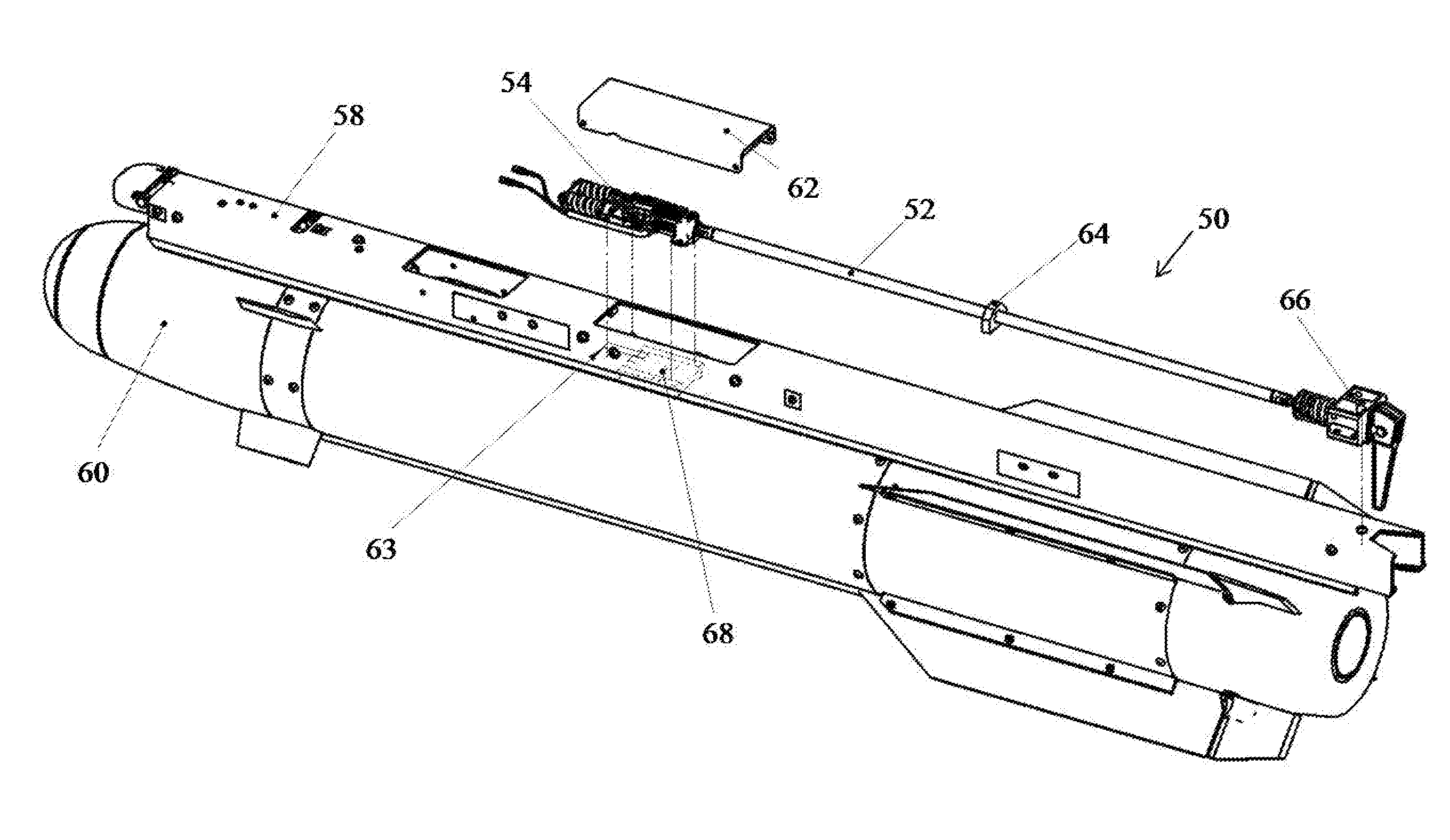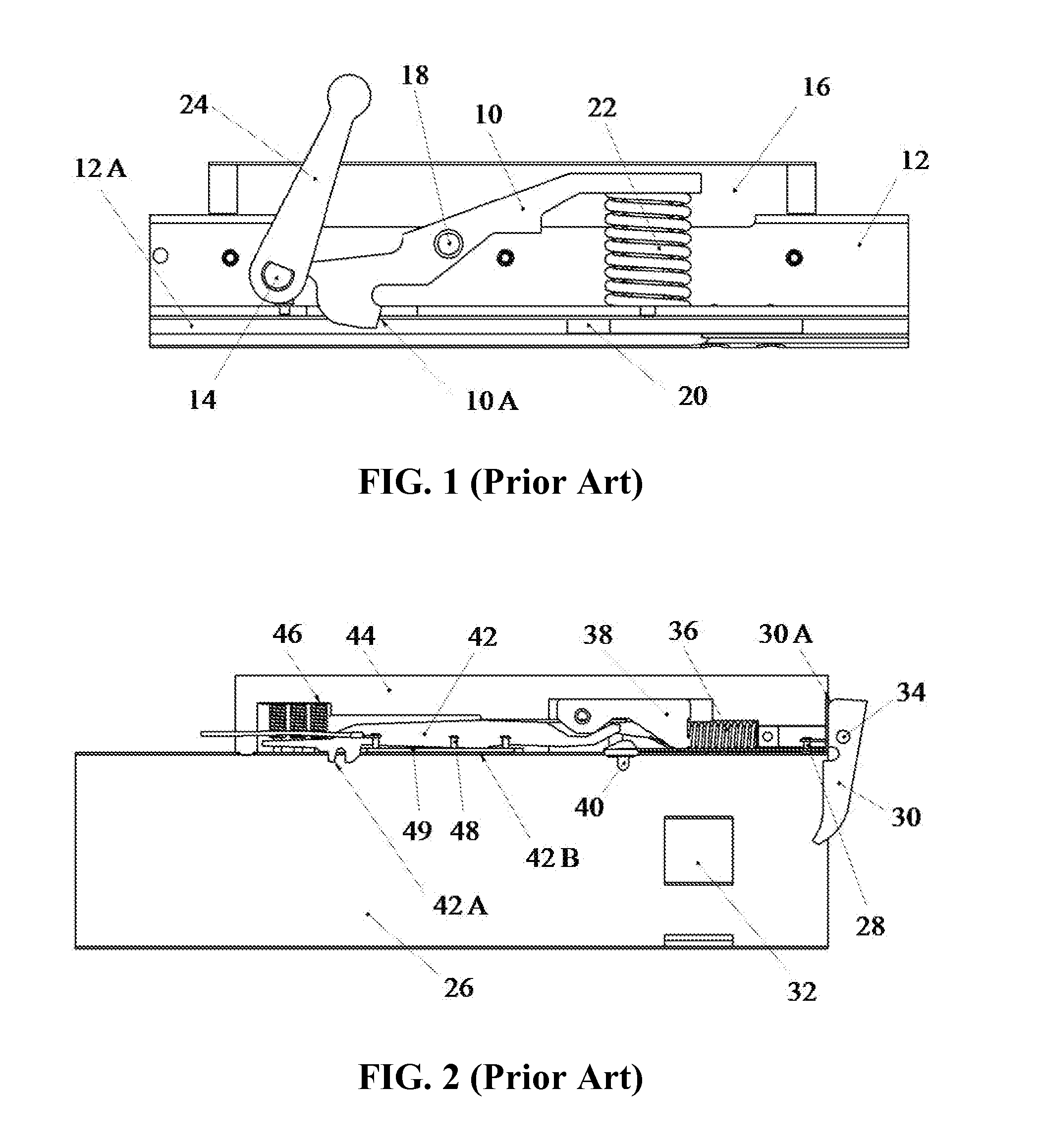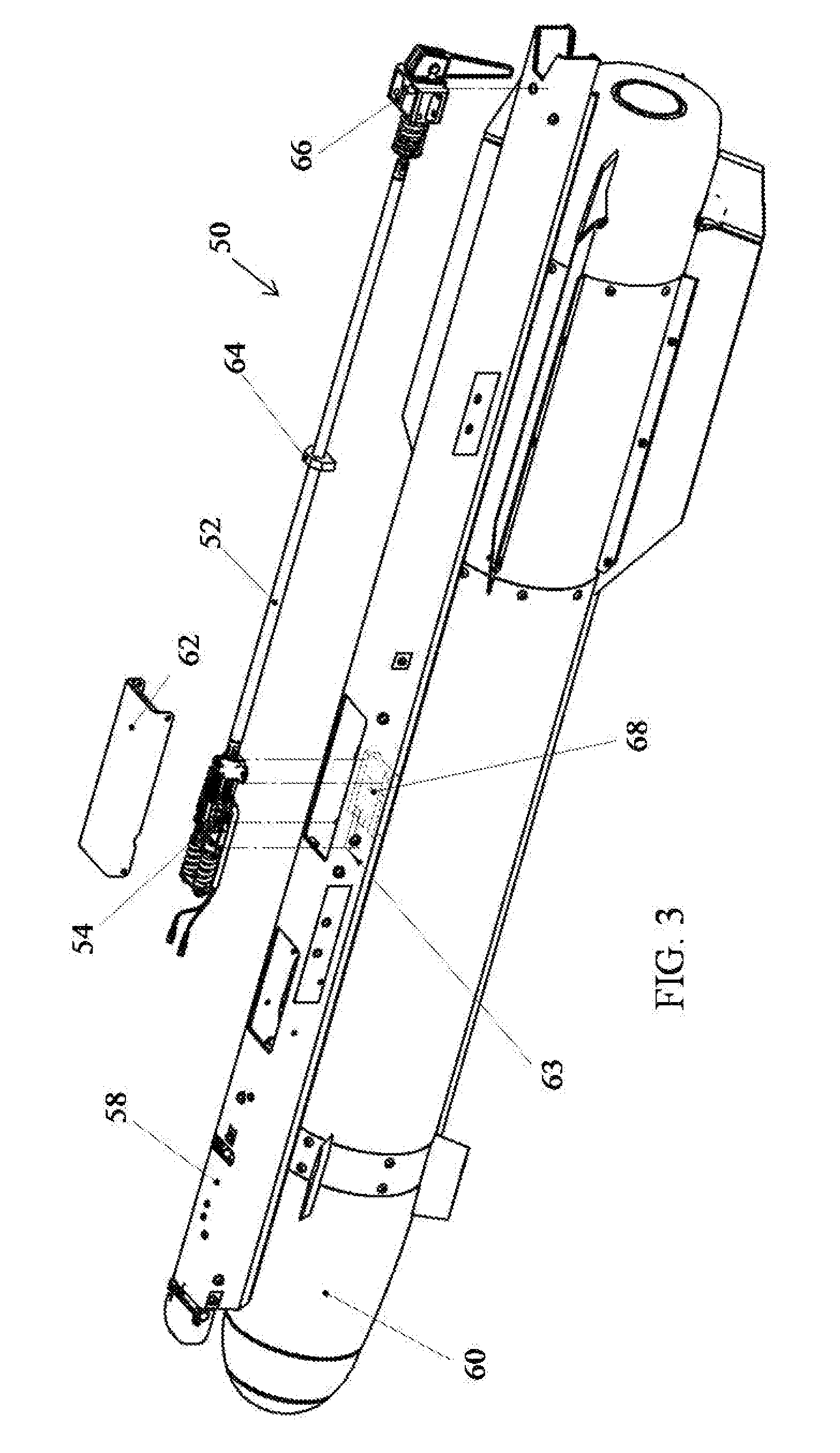Missile Secure-Release Mechanism Having Wheel Lock Detent
a secure release and missile technology, applied in the direction of rocket launchers, weapons, weapons, etc., can solve the problems of the most complicated detent/retention system, the detent is not reusable, and the release force is poorly controlled
- Summary
- Abstract
- Description
- Claims
- Application Information
AI Technical Summary
Benefits of technology
Problems solved by technology
Method used
Image
Examples
Embodiment Construction
Reference is now made to the drawings wherein like numbers represent like parts in each of the several figures.
In FIG. 3, a securing-releasing mechanism 50 is provided with a trigger assembly 66 and a wheel assembly 54 which are connected by connecting rod 52. The trigger assembly 66 and the wheel assembly 54 are secured to the launch rail 58. The connecting rod 52 is held in position above the launch rail 58 by lubricated rod guide 64. The wheel assembly 54 is protected from the environment by a cover 62. When missile 60 is loaded onto the rail 58, the wheel assembly 54 securely retains the missile 60 on the rail 58 until the missile is launched.
In FIG. 4, a secure-release wheel 70 is mounted to wheel slider 76 by wheel pivot pin 74. The slider pin 90 is inserted into the wheel slider 76 such that the rotational position of the wheel 70 is limited in either rotational direction by slider pin 90. The wheel slider 76 is inserted into the forward end of the wheel housing 72.
Safety rel...
PUM
 Login to View More
Login to View More Abstract
Description
Claims
Application Information
 Login to View More
Login to View More - R&D
- Intellectual Property
- Life Sciences
- Materials
- Tech Scout
- Unparalleled Data Quality
- Higher Quality Content
- 60% Fewer Hallucinations
Browse by: Latest US Patents, China's latest patents, Technical Efficacy Thesaurus, Application Domain, Technology Topic, Popular Technical Reports.
© 2025 PatSnap. All rights reserved.Legal|Privacy policy|Modern Slavery Act Transparency Statement|Sitemap|About US| Contact US: help@patsnap.com



